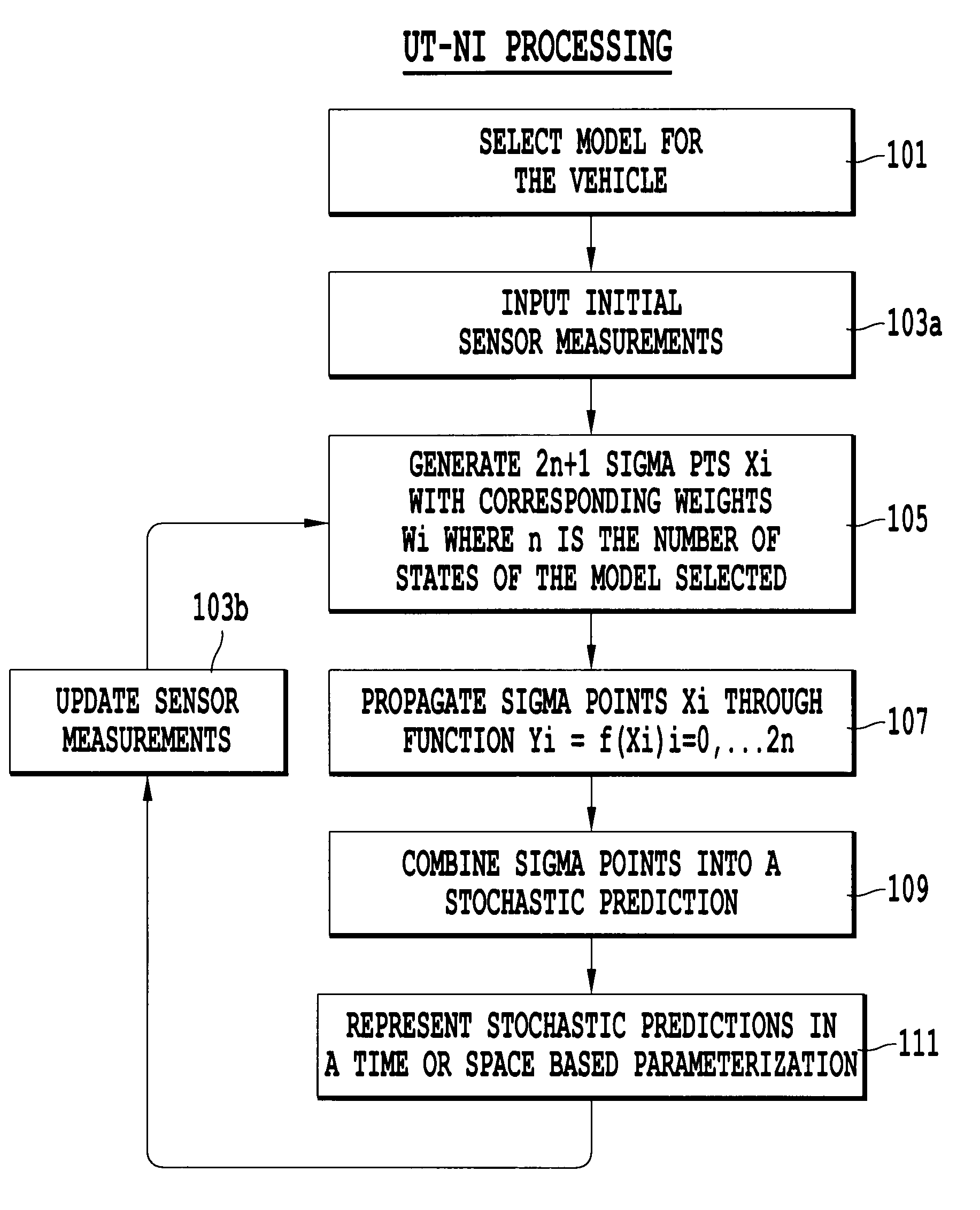System and method for stochastically predicting the future states of a vehicle
a future state and stochastic prediction technology, applied in the field of methods and systems for predicting the future state of vehicles, can solve problems such as the problem of using ni alone to predict the future path of vehicles, and achieve the effect of more accurate predictions and computationally faster
- Summary
- Abstract
- Description
- Claims
- Application Information
AI Technical Summary
Benefits of technology
Problems solved by technology
Method used
Image
Examples
Embodiment Construction
[0029]Referring now to the drawings, wherein like reference numerals designate identical or corresponding parts throughout the several views. FIG. 1 is a flow chart illustrating the processing steps for predicting the future states of a vehicle. Description herein will be directed to an automobile. However, this invention is applicable to other moving objects which are suitable for non-linear modeling.
[0030]In step 101, a non-linear model for the vehicle is chosen. Many vehicle-level models exist. The transformation between the vehicle coordinate frame and the earth coordinate frame implies that all models will at least include some trigonometric nonlinearities. Any model that involves yaw and lateral motion of the vehicle will introduce further nonlinear behavior.
[0031]The model described herein is the CB model. However, other dynamic models which can be utilized include the CA, KU, and KB models. Each model consists of differential equations which, when solved, represent the dynam...
PUM
 Login to View More
Login to View More Abstract
Description
Claims
Application Information
 Login to View More
Login to View More - R&D
- Intellectual Property
- Life Sciences
- Materials
- Tech Scout
- Unparalleled Data Quality
- Higher Quality Content
- 60% Fewer Hallucinations
Browse by: Latest US Patents, China's latest patents, Technical Efficacy Thesaurus, Application Domain, Technology Topic, Popular Technical Reports.
© 2025 PatSnap. All rights reserved.Legal|Privacy policy|Modern Slavery Act Transparency Statement|Sitemap|About US| Contact US: help@patsnap.com



